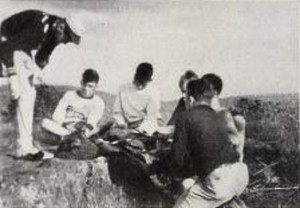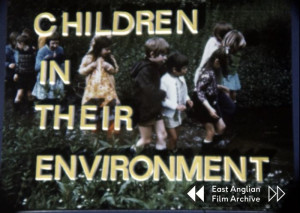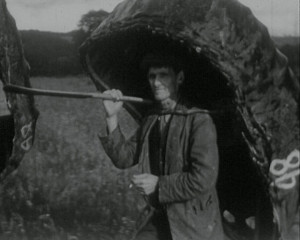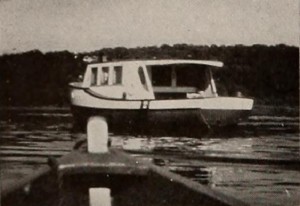"Footage of a Jewish boys camp in Bridlington for boys from Manchester, Birmingham, Sheffield and Glasgow. The member parade around in uniform playing brass instruments, an officer take the salute and the boys do rifle drills. The cadets are then seen laying wreaths and parading. There are then scenes of the boys going down to the beach and playing in the sea." (NWFA Online Archive)

"The fact that the film, Camp Pinnacle, made by Robert F. Gowen, was provided with a clear spoken accompaniment served to enhance the workmanlike excellence of its cinematic presentation. Since it was a film made, avowedly, to sell to prospect parents the advantages of Camp Pinnacle, it would hardly have been fair to look for those more delicate nuances of atmosphere and sequence which may become a labor of love in the more personal film. Thus Camp Pinnacle was chosen for its excellence as a straightforward exposition, in glowing color, of every interesting aspect of the lives of the lads and their counselors at camp. In setting this forth, Mr. Gowen has chosen simple, natural sequences and has interpreted these with technical excellence and secure knowledge of the Kodachrome medium." Movie Makers, Dec. 1936, 551.
A Camper and His Canoe was filmed at Camp Kawagama, the youth summer camp run by the filmmaker and his wife.
"Canadian Capers, filmed by Hamilton H. Jones, ACL, is a superlatively good vacation picture, complete in every important detail and containing several magnificent examples of sequencing. Among these is a satisfying study of a railway train. Mr. Jones neglected none of the cinematically interesting views that are unique to this subject and included several, such as scenes inside the engine cab, that ordinarily could not be secured. This picture has the important quality of conveying to the audience the maker's enthusiasm for the subjects filmed." Movie Makers, Dec. 1932, 560.
"Film opens with a shot of a camera and projector. Following scenes include family footage of two girls dancing in a garden; shots of a birdbox, beehive and female beekeeper; snowy street scenes; a child playing with a lamb; women participating in an outdoor gymnastic display and brief footage of a cricket match at Ashley." (NWFA Online Database)
"A record of local events in Burnley from 1932 through to 1950. Features a 1932 Hospital Carnival, a Burnley v Luton football match from 1935 and the last tram to run in the town on 7th May 1935. Wartime footage includes the activities of the Burnley Home Guard and a 'Wings for Victory' parade along Colne Road in 1943. King George VI visits Burnley on 8th March 1945 before newspaper headlines announce the end of the war and there are shots of street parties, dancing outside the Town Hall, fires being lit, a thanksgiving service at St Peters Church and an outdoor concert and ceremony at Towneley Park. The film ends with footage from the 1950 General Election at which local Labour MP Wilfrid Burke retains his seat." (NWFA Online Archive)

A documentary film demonstrating how learning and education in the classroom can be supported by an engagement with the local community and natural history.

"Film recording the activities of coracle fishermen at Cenarth" (EAFA Database).

"In spite of the almost insurmountable difficulties in using feet to portray much of the action and most of the emotion in a movie, E. H. Sparks has managed to make Doghouse Blues completely comprehensible. A delightful farce of a bibulous fisherman, the story makes judicious use of the angler's big toe to denote thirst, hunger and any other emotion which might master a man on a solo weekend. Colorful scenes of inlets and bays, as well as attractive sequences of fishing craft, imbue the film with a flavor of authenticity. In satiric repetition, his indignant wife trails the tippling angler to the secluded spot where his boat rides at anchor, there to find him "taking the long count." A rude awakening for the errant husband and an eminently suitable final scene close the picture." Movie Makers, Dec. 1946, 471.
Total Pages: 14